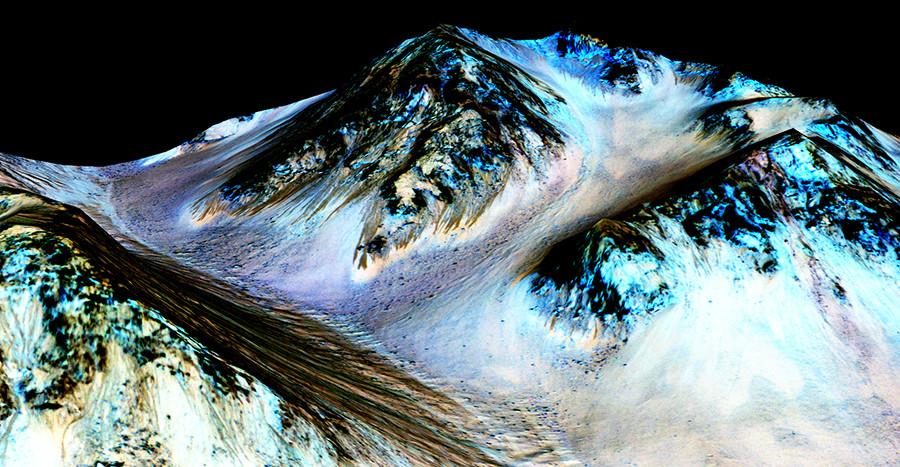Mars shows evidence of water
Science teacher reacts to announcement made by NASA
A photo of the Martian surface showing the currents of liquid water. NASA released these images along with their announcement.
Last week, social media was abuzz about an announcement that NASA planned for Monday, September 28th about Mars. Speculation about the announcement was sent across social media. On Monday, it was revealed that there was evidence of liquid water on Mars.
“It’s not surprising,” Earth and Space Science teacher Coach Kostoff said. “We have always had suspensions. We even had speculation that some water from Earth was on Mars.”
NASA has plans to colonize Mars around the year 2020, or at least put a man on Mars. Kostoff believes with this discovery it’ll help that goal become reality.
“It’s good that they are making advances to where we can put a person on Mars,” Kostoff said. “This just helps advance that now.”
NASA also stated that they would use the rover to dig into the Martian surface to continue to study the liquid water. The water flows in ocean currents underneath the Martian surface which is proven by photos.
“When I was your age I would always hear that we would go to Mars in 20 years, we would go to Mars in 20 years,” Kostoff said. “Now, with this discovery it’s becoming more of a reality, maybe around 2020 we will actually have a colony on Mars.”
Regardless, Mars has now been proven to have liquid water and to add on to that, NASA believes that there could be life on the red planet as well due to the Martian rover, Curiosity, carrying Earth bacteria to the red planet. NASA believes that the bacteria could possibly survive on Mars. Although, this has not been proven but NASA is constantly looking for signs of life.
“We know there is life on Mars, because we put it there,” astronaut and associate administrator of the NASA Science Mission Directorate John Grunsfeld stated.

Hello, my name is Jack Densmore. If I had the ability to be Liam Neeson for a day I would. Not only has he trained Obi-Wan Kenobi, but also Batman. Also...




